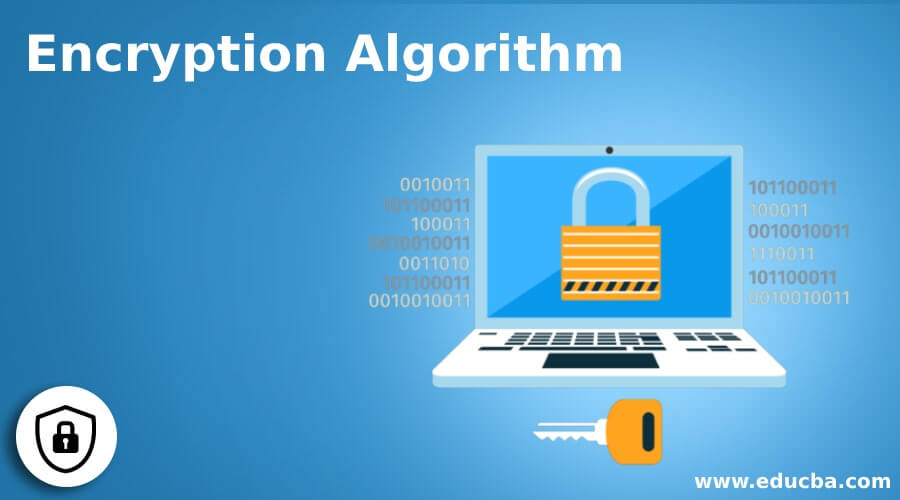Updated July 1, 2023

What is an Encryption Algorithm?
An encryption algorithm is like a secret code that helps keep information safe and secure. When you want to send sensitive information over the internet, such as passwords or credit card numbers, you can use it to scramble the information into an unreadable format. This makes it more difficult for unauthorized people to access or steal your information.
These algorithms use a key to encrypt the information, and only someone with the key can decrypt it and make it readable again. Different algorithms use different keys and methods to encrypt the information, making them harder to crack. Encryption algorithms combined with a key convert plaintext to ciphertext and vice versa. Symmetric-key algorithms (also known as secret key algorithms) and asymmetric key algorithms (also known as public key algorithms) are two types.
Symmetric Algorithm
The symmetric algorithm uses a single key to encrypt and decrypt the data. This algorithm transforms the data into ciphertext and decrypted by the peers using the same key used to decrypt it. The symmetric algorithm is the foundation for other algorithms, such as Blowfish and Twofish.
Asymmetric Algorithm
The asymmetric algorithm uses two different keys to encrypt and decrypt the data. The key for encrypting the message is the public key, while the key for decrypting the message is the private key. The private key must be kept very secure between the two keys to protect the system from a man-in-the-middle attack. The encryption algorithms like RSA use this mode of encryption.
Types of Encryption Algorithms
Depending on the security requirements different algorithms are used with the cipher suite. Below are some of the important Encryption Algorithms:
1. AES
-
The Advanced Encryption Standard (AES) endorsed by the US government is the most trusted symmetric algorithm.
-
AES is efficient in 128-bit form; it also uses 192 and 256-bit for heavy encryption.
-
AES protects the system against all kinds of attacks except brute force attacks.
2. RSA
- The Rivest-Shamir-Adleman (RSA) is an asymmetric encryption algorithm
- RSA is the de facto algorithm to encrypt the data transmitted over the internet.
- It is opposite to that of Triple-DES which is a symmetric algorithm.
- In RSA, there are Public and Private keys. The public key encrypts is accessible to anyone to encrypt data, while the Private key is secret and used to decode data.
3. Triple DES
- Triple DES is the updated or advanced version of the Data Encryption Standard (DES) algorithm.
- It is the common symmetric algorithm used to encrypt the data in many organizations.
- Triple DES depends upon a single key to encrypt and decrypt the data.
- Triple DES uses three different keys of 56 bits each, which further adds to 168-bit data encryption.
4. Blowfish
- Blowfish is the symmetric algorithm designed to replace the Data Encryption Standard(DES).
- This algorithm splits the entire message into blocks of 64 bits and then encrypts them individually to enhance security.
- Blowfish is used in the e-commerce platforms that accept or process payments made online to encrypt the card and other critical details.
5. Twofish
- Twofish is another symmetric algorithm and is a predecessor of Blowfish.
- Blowfish uses a single key to encrypt or decrypt the data.
- This technique is one of the fastest encryption algorithms for software and hardware environments.
- The key is almost a 256-bit long key.
- Twofish is freely available for anyone who wants to use it.
Conclusion
Several algorithms in the market are available to secure the data. The sole purpose of these algorithms is to protect against a man-in-the-middle attack, which involves the sniffing of data by someone malicious in an unauthorized manner. We can choose it among various options based on the software or the hardware systems requirement. Some organizations usually select any particular algorithm as the standard one to transform the message into ciphertext.
The algorithm is based on the requirements and the speed of encryption. For example, the Blowfish algorithm is fast enough to accelerate encryption processes. Many systems that require quick data encryption and decryption should use Blowfish. Government-based organizations prefer to have their standard encryption algorithm applied everywhere to maintain the standard. Several algorithms are freely available so that organizations with low budgets can use them to protect their data being exchanged online
Recommended Articles
This is a guide to the encryption algorithm. We have covered the various types and detailed understanding of the symmetric and asymmetric algorithms. You can also learn more by reading the articles listed below:-


